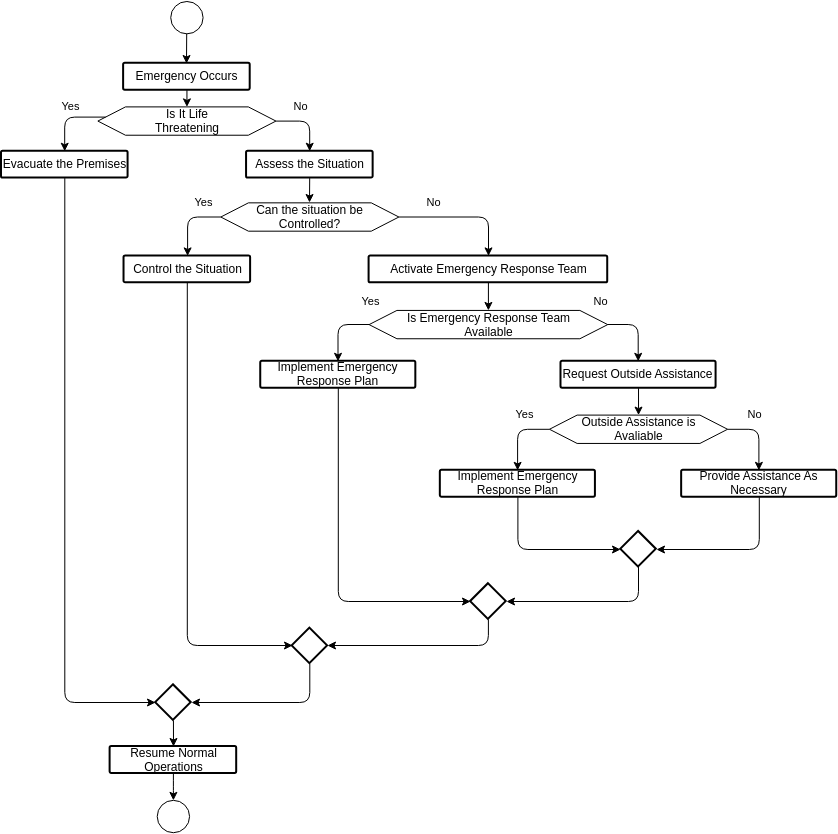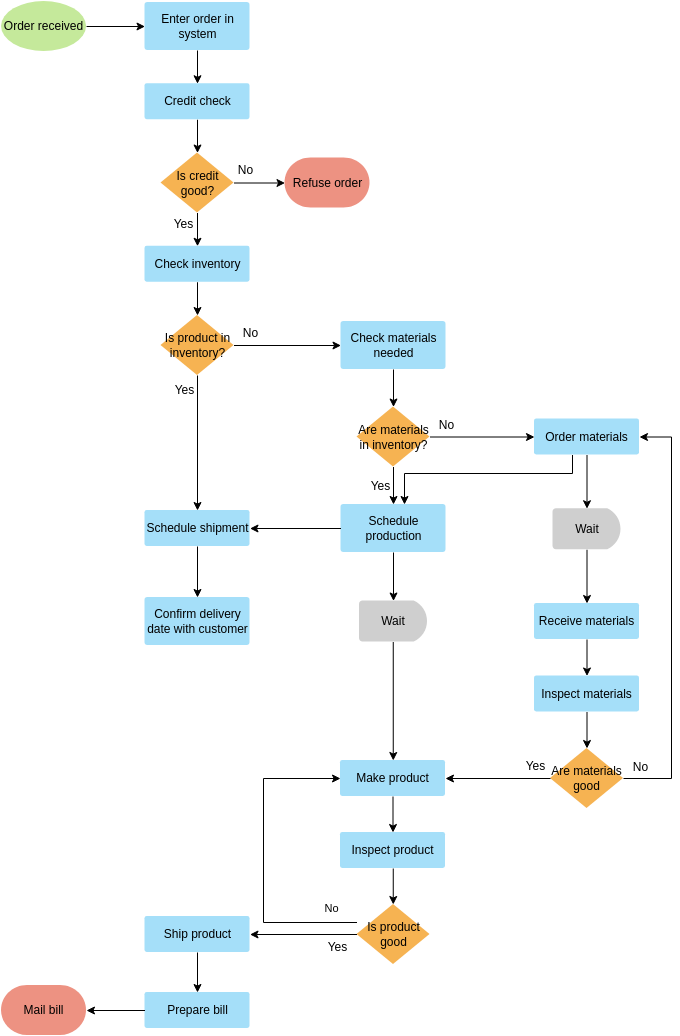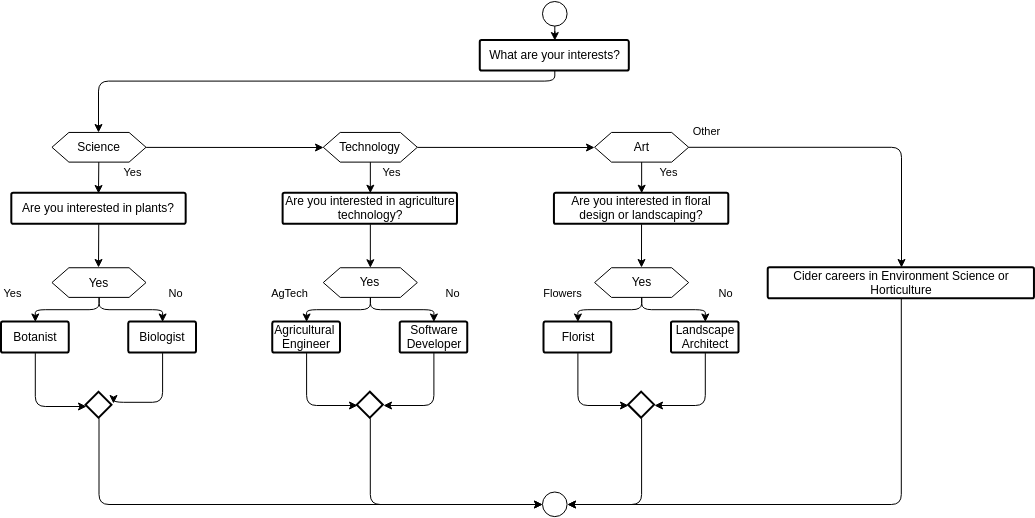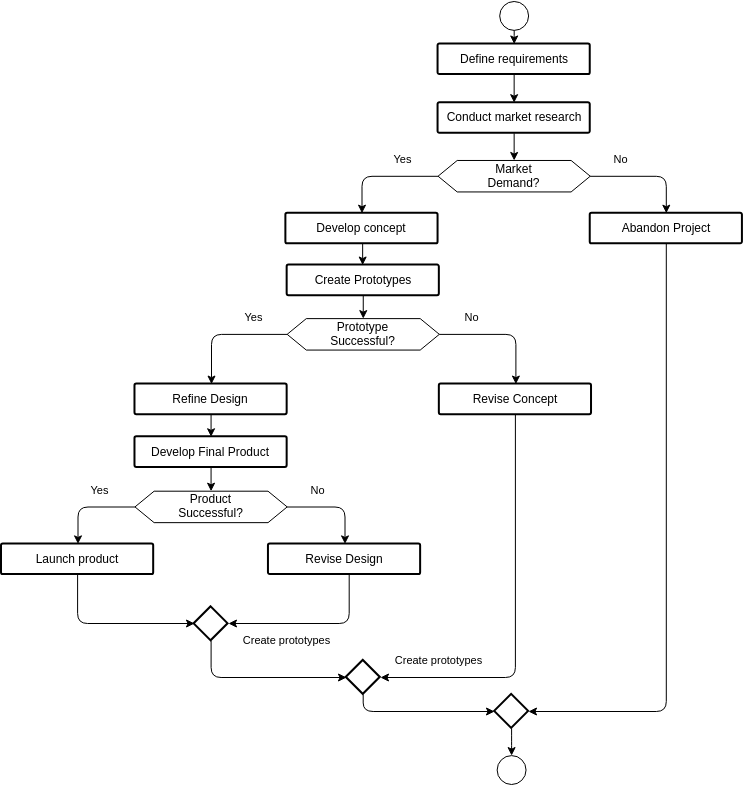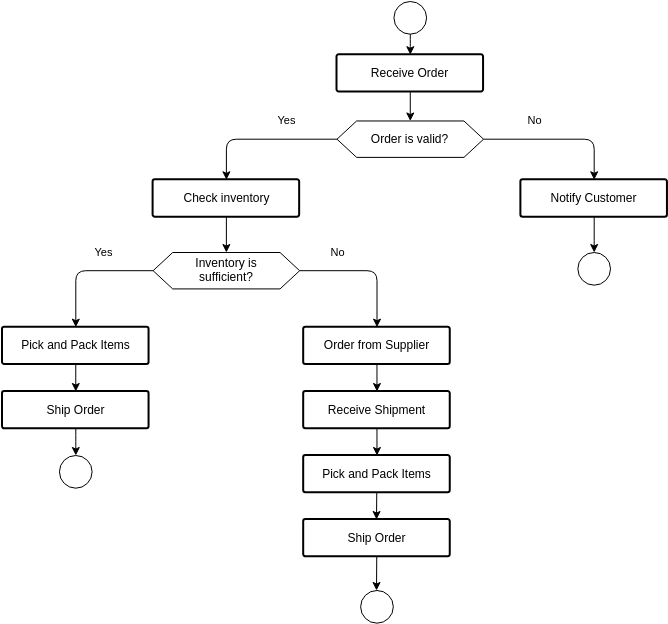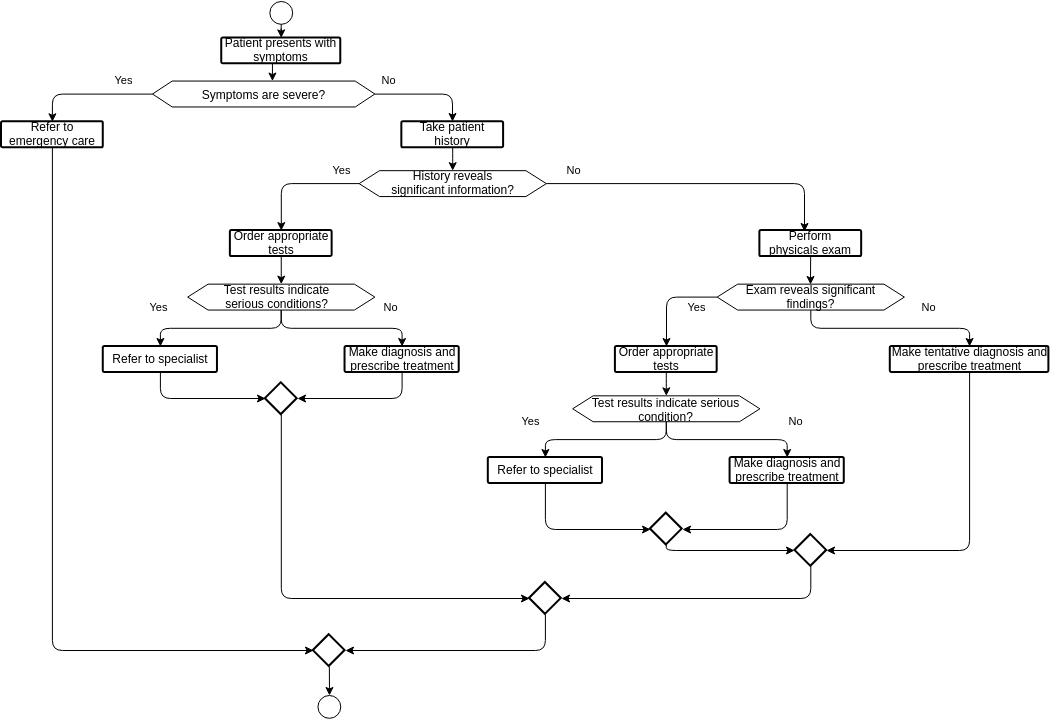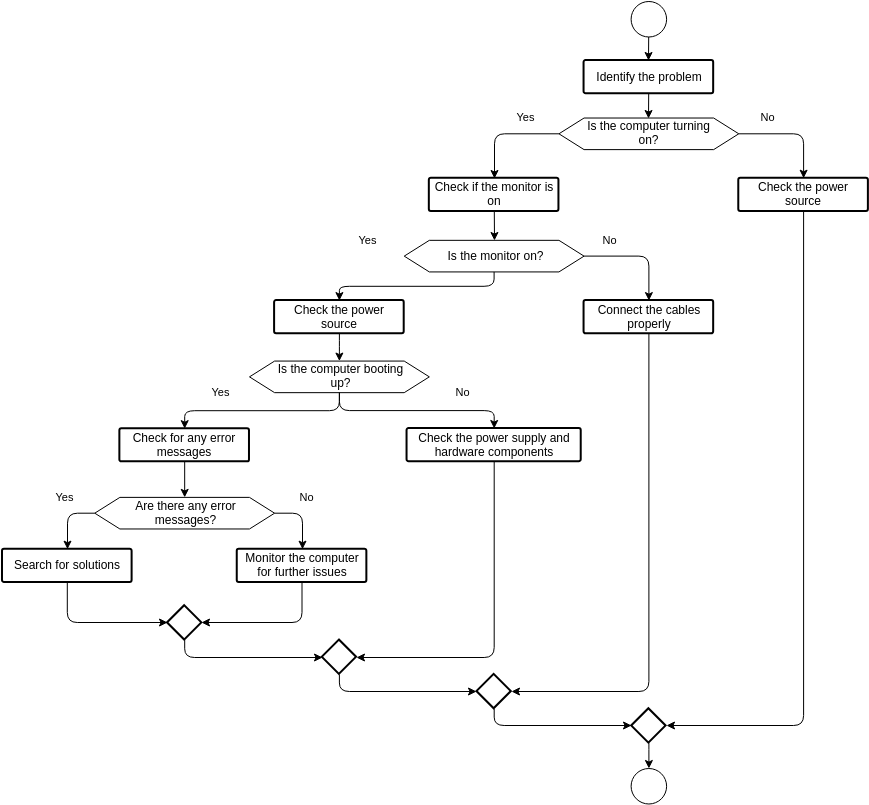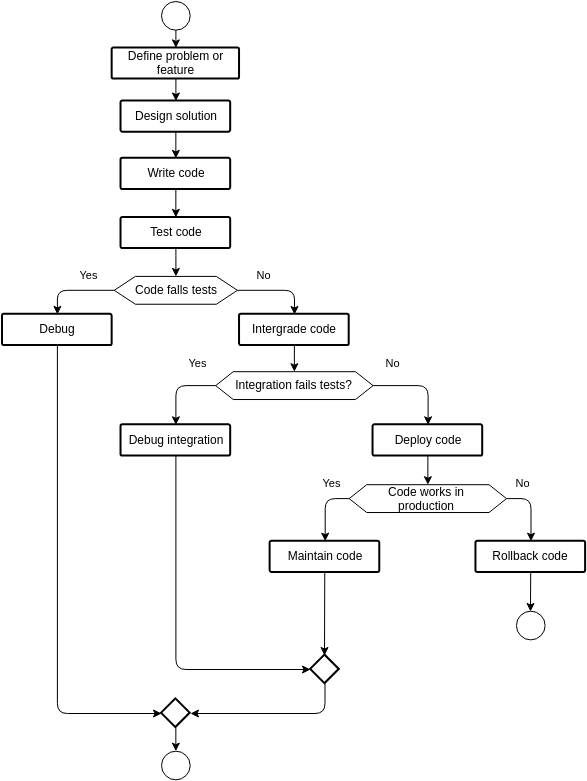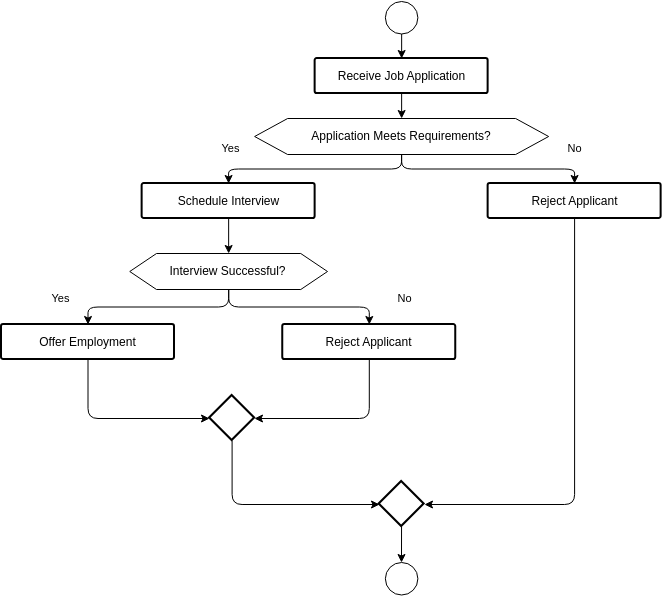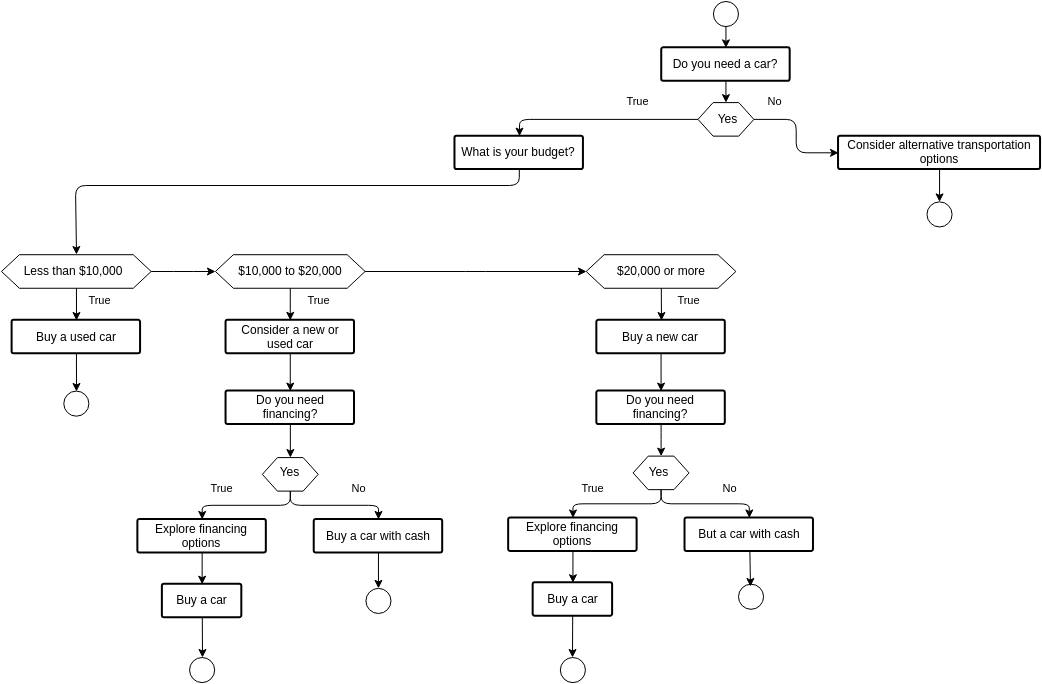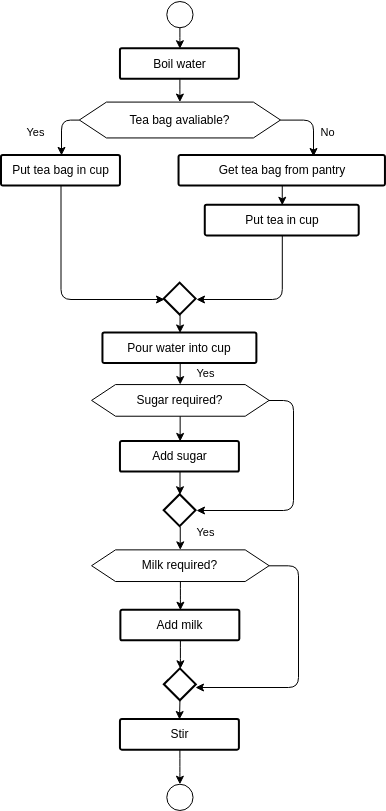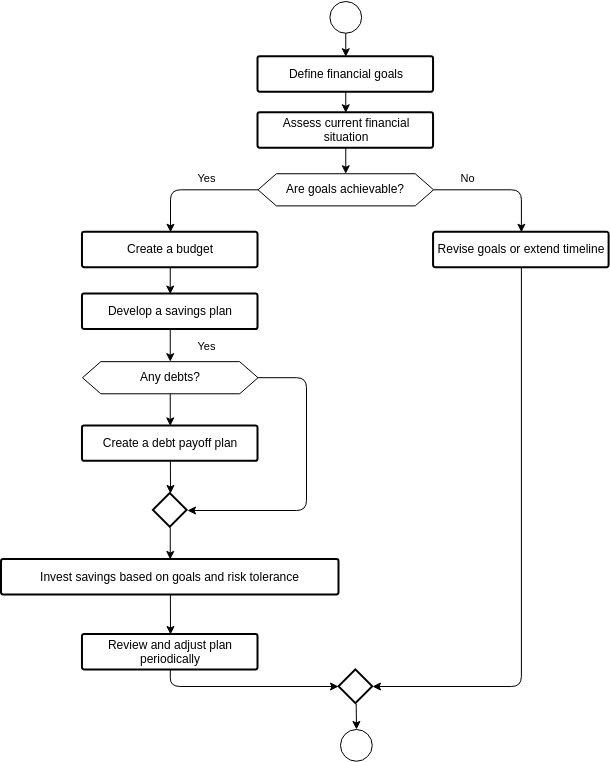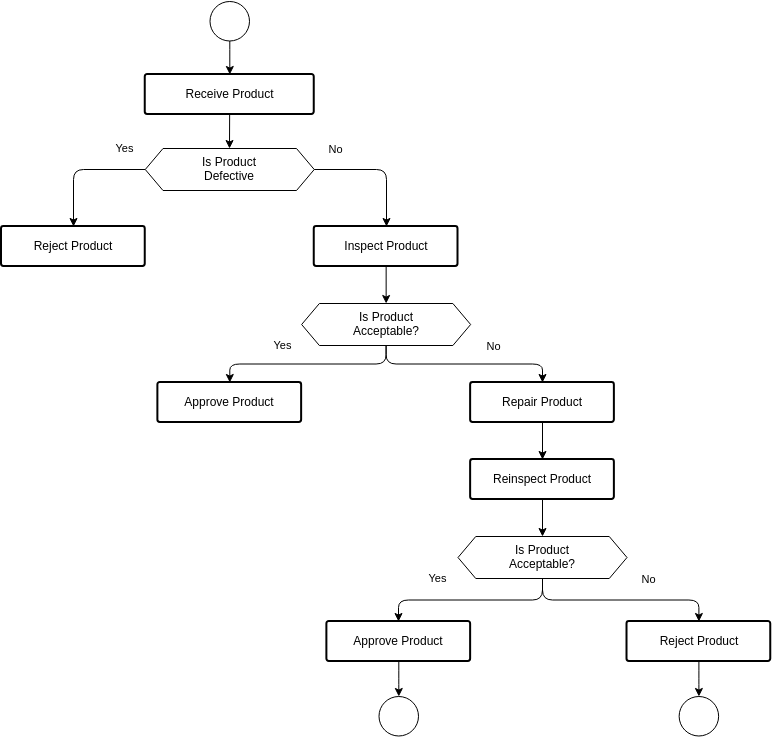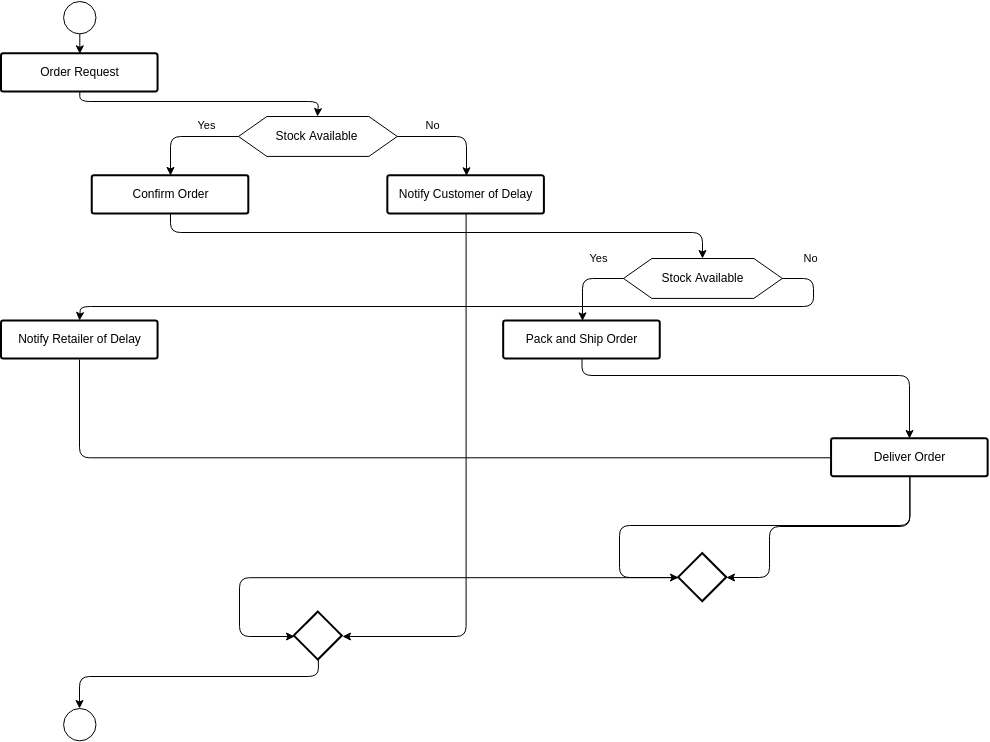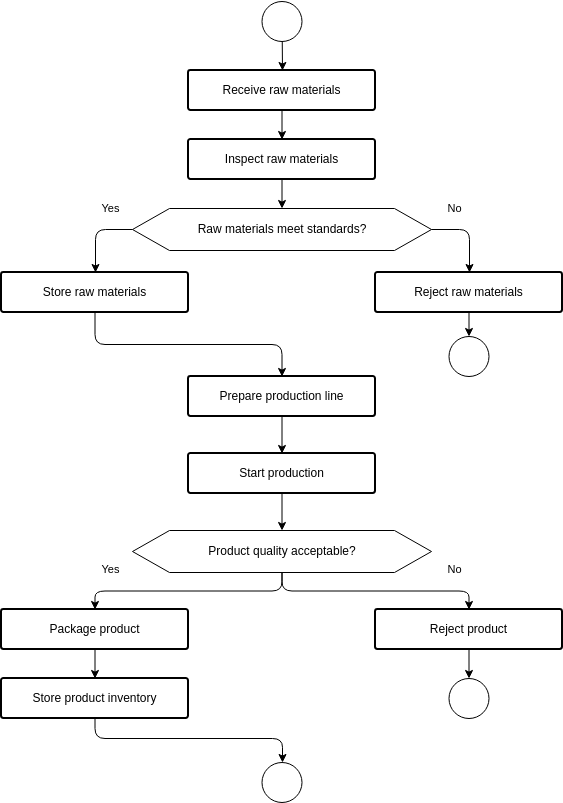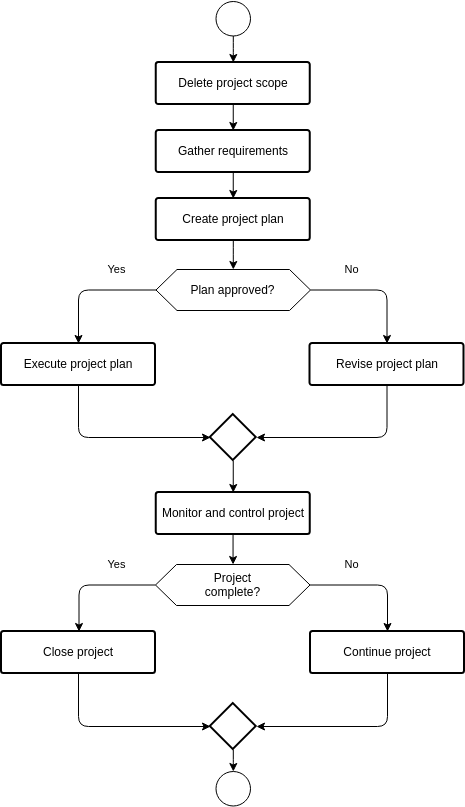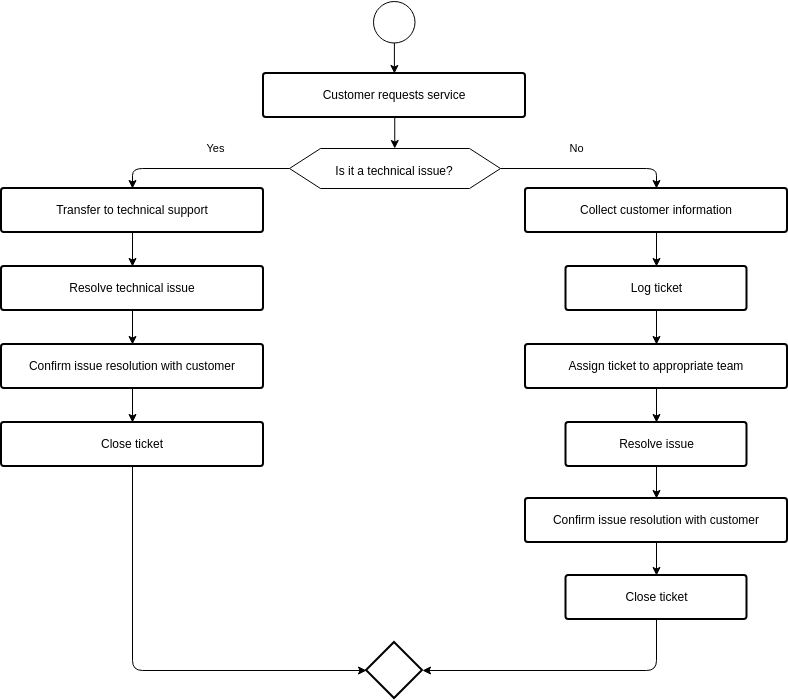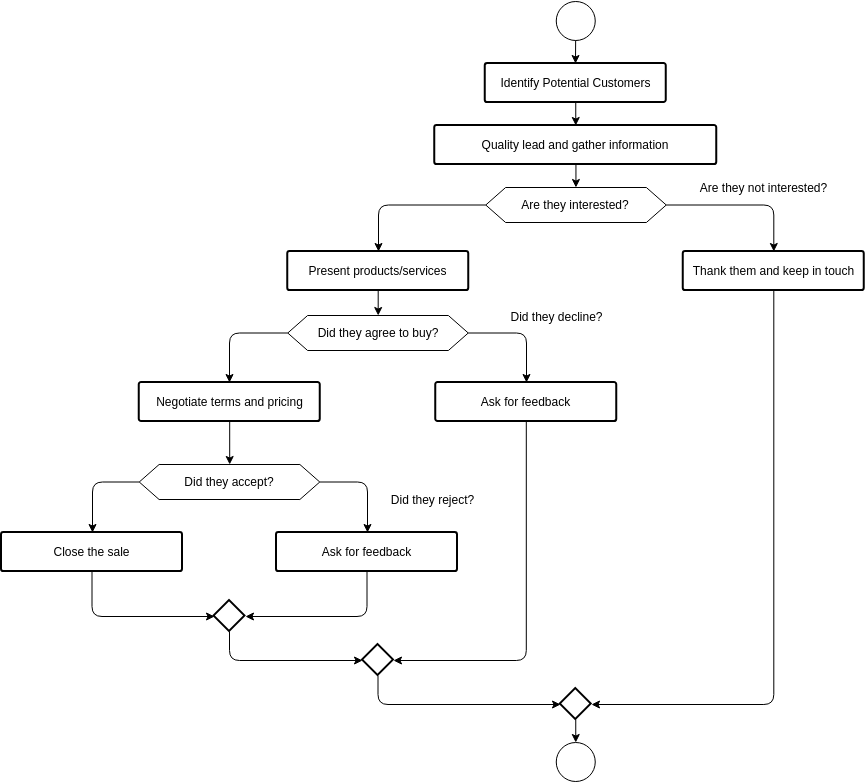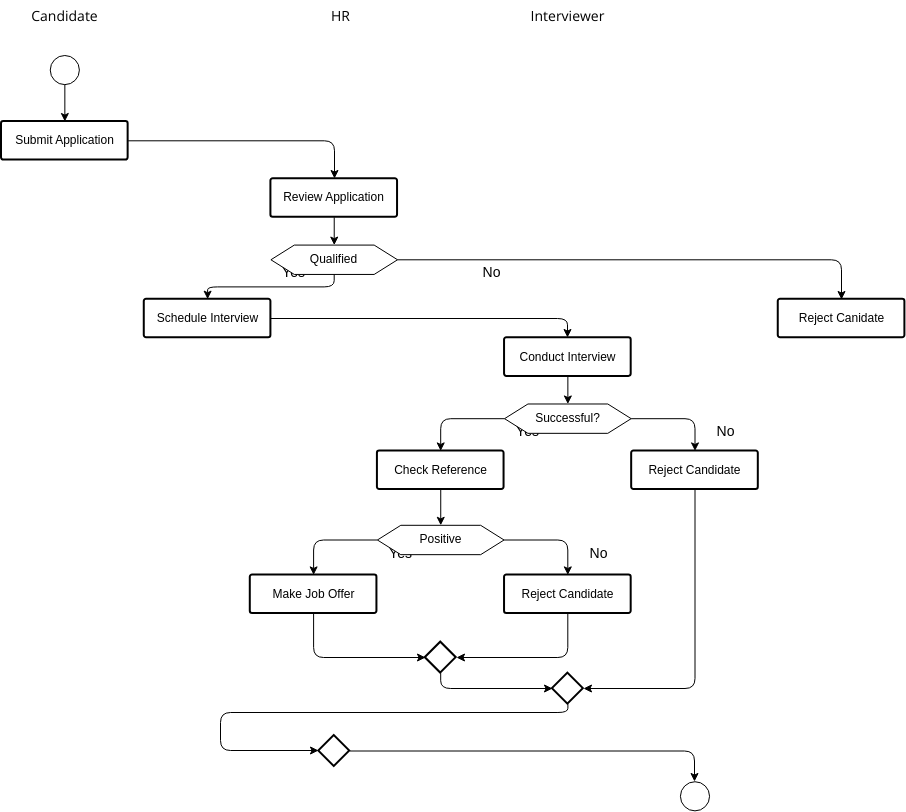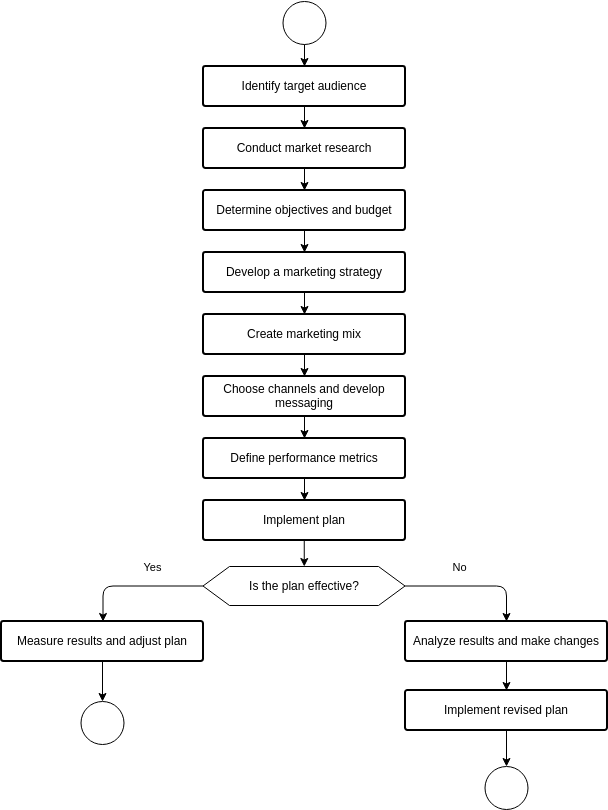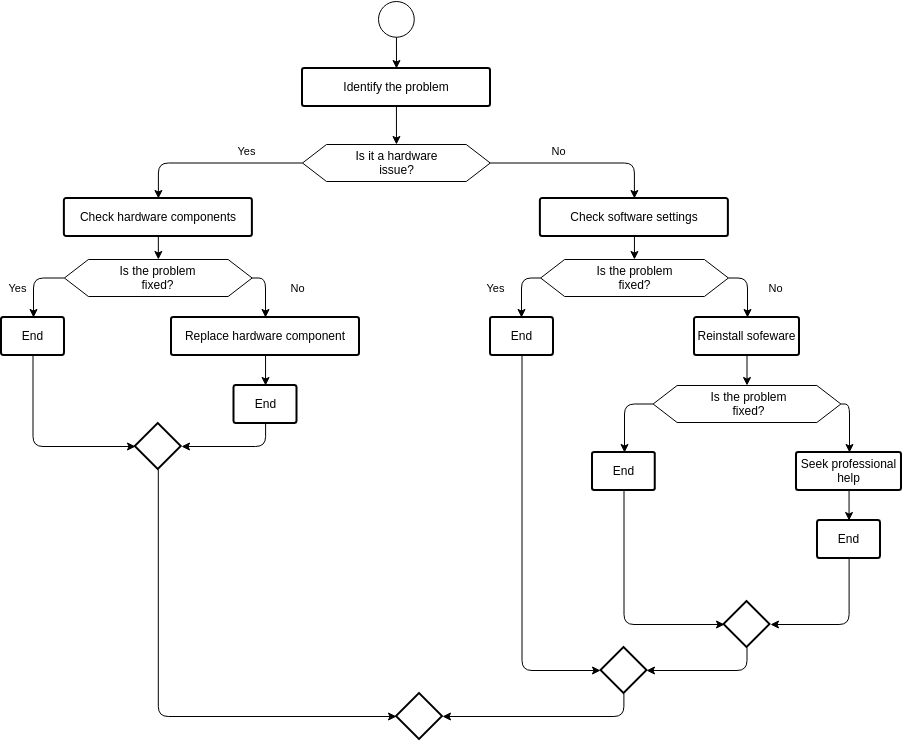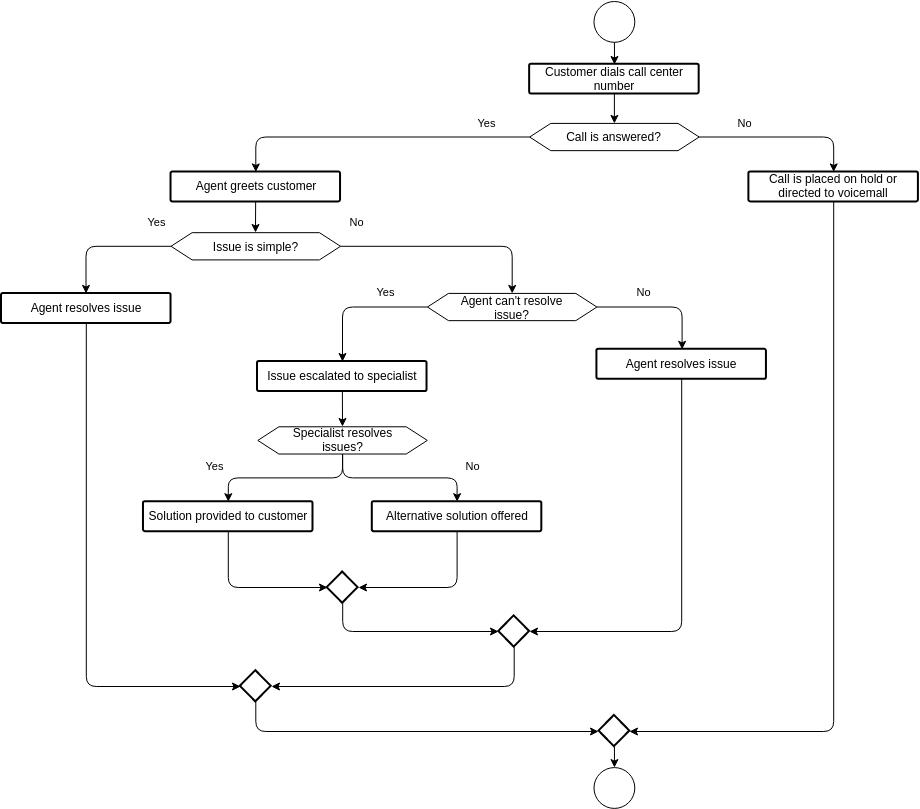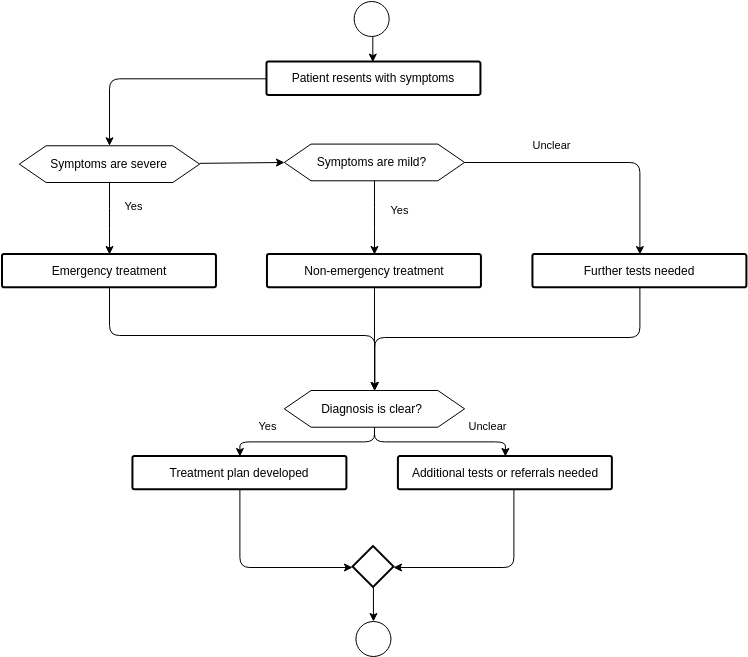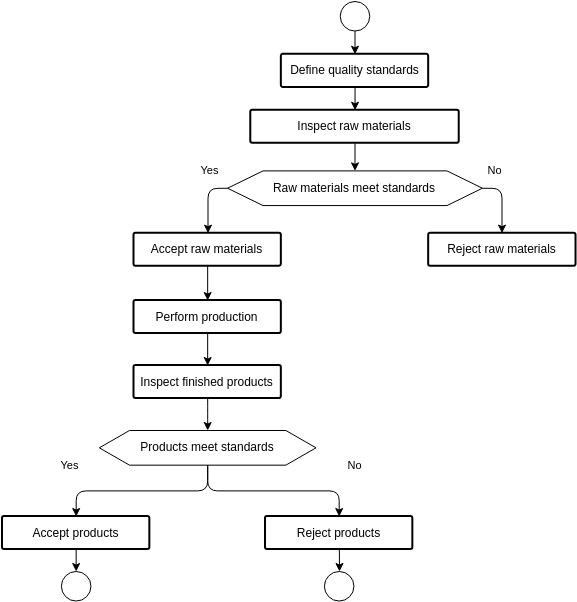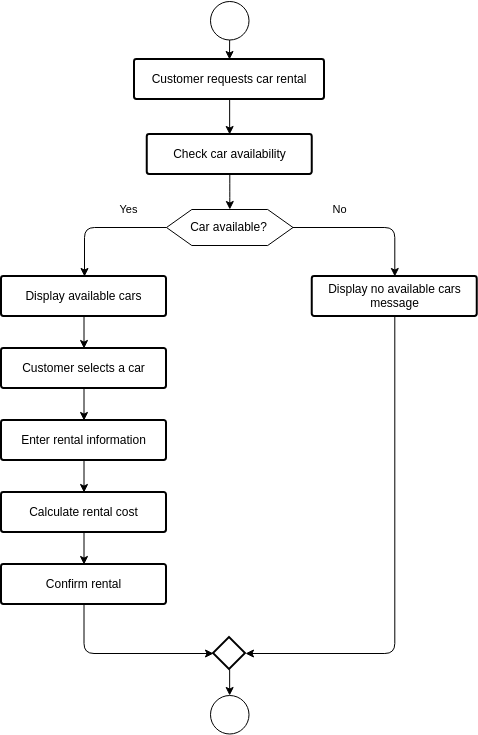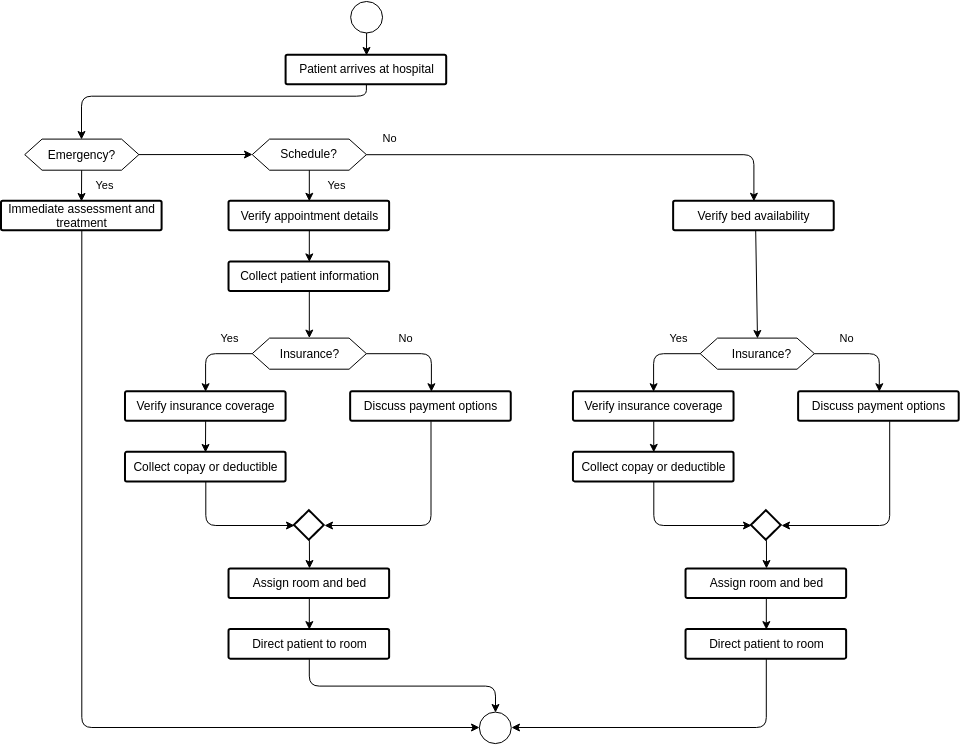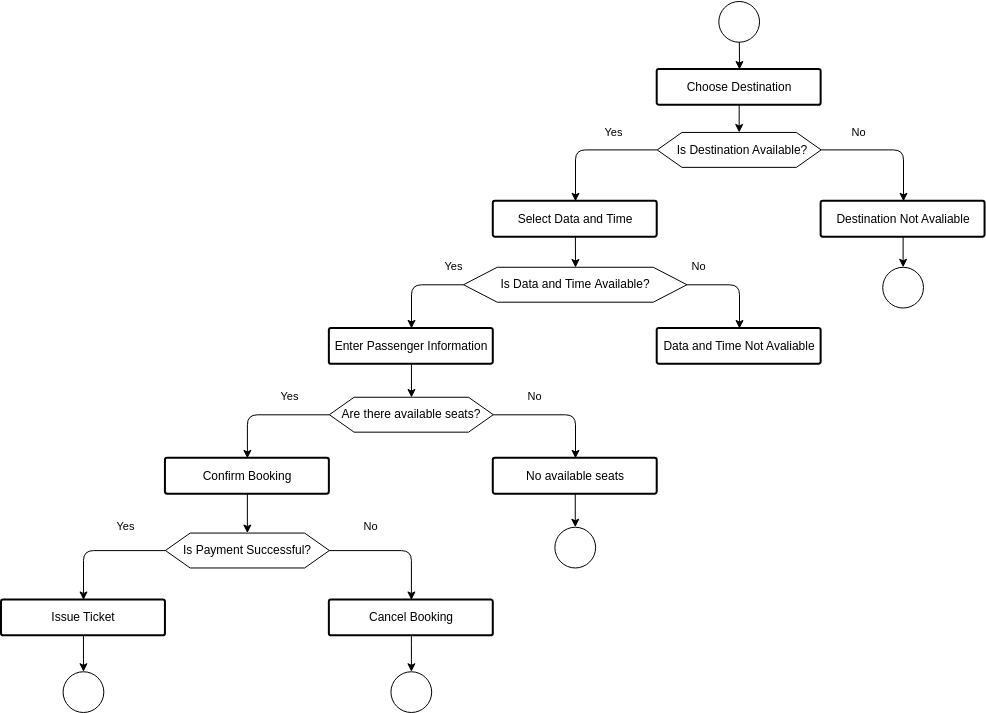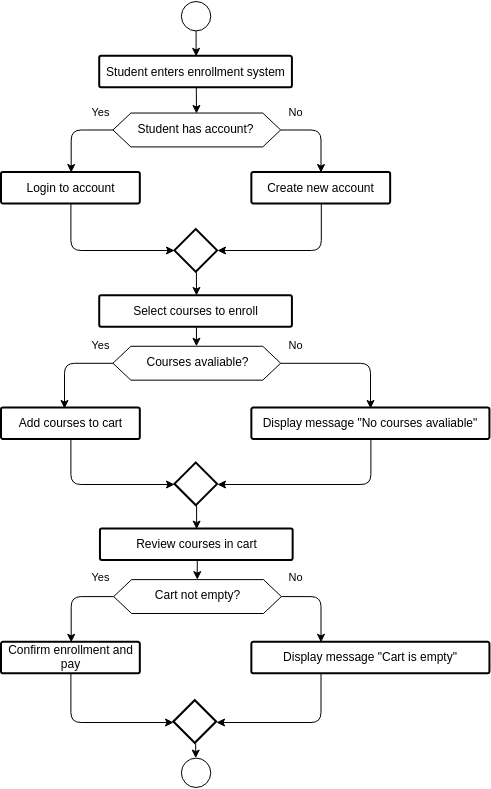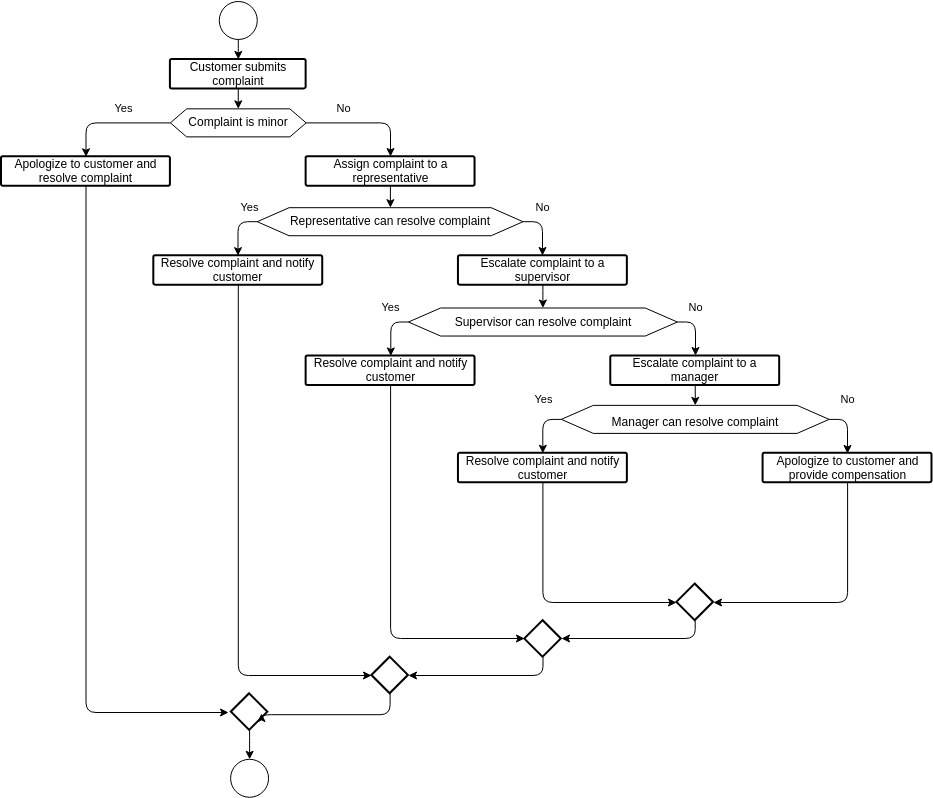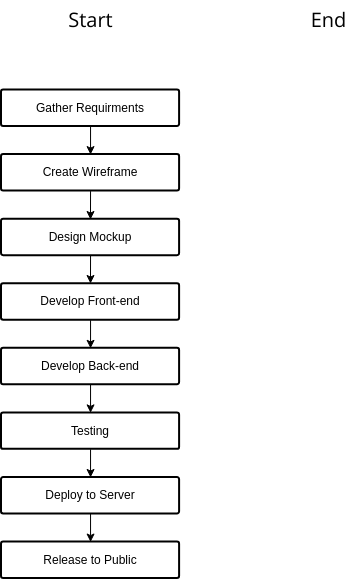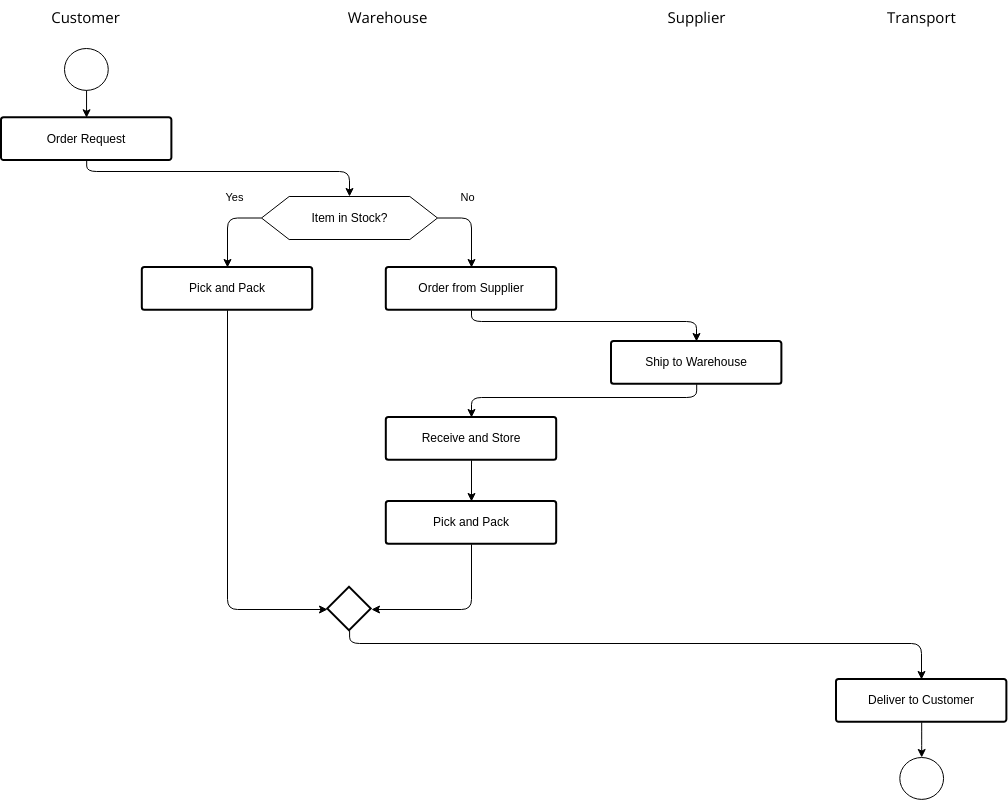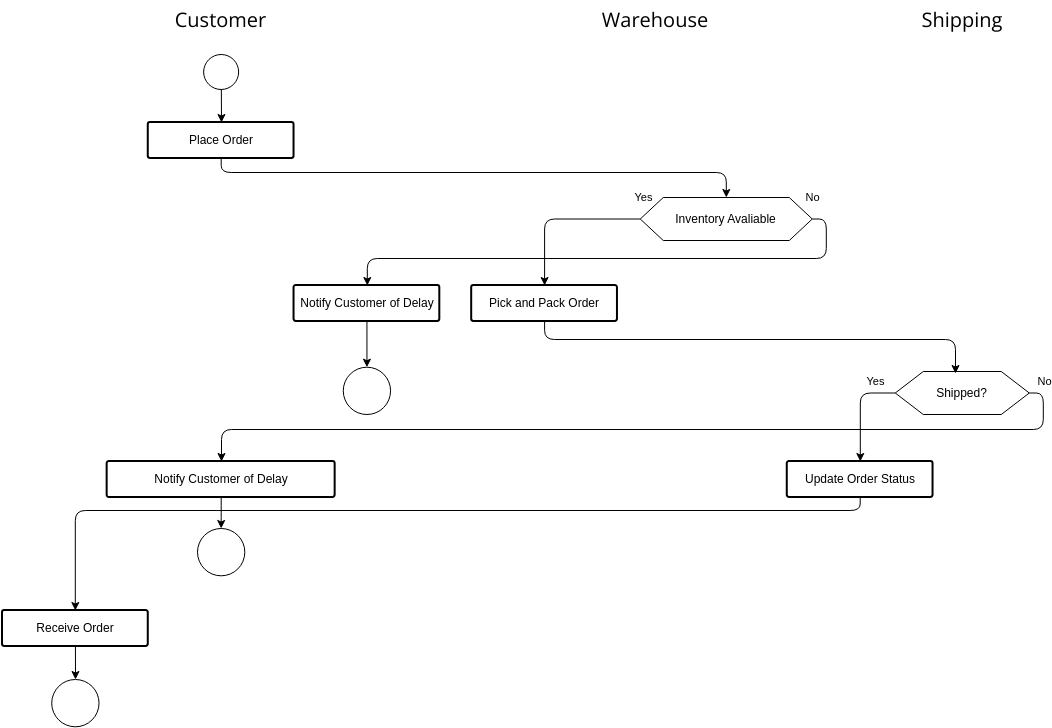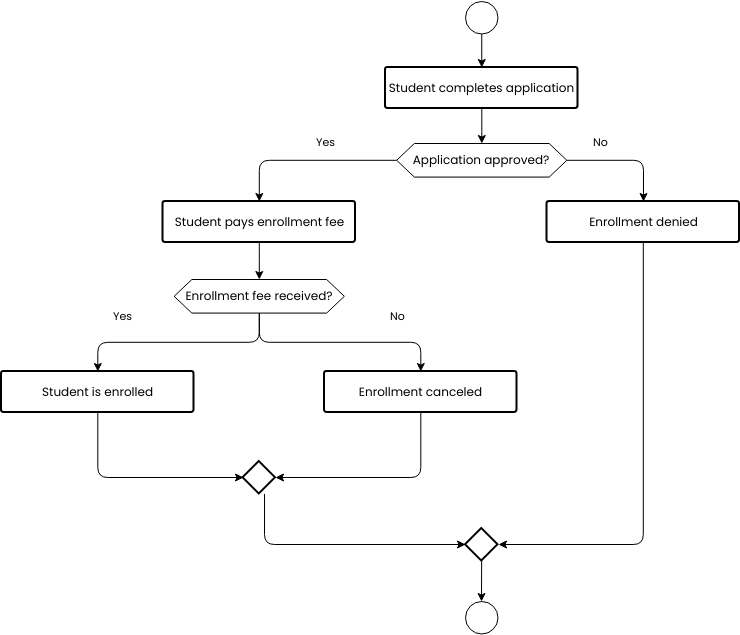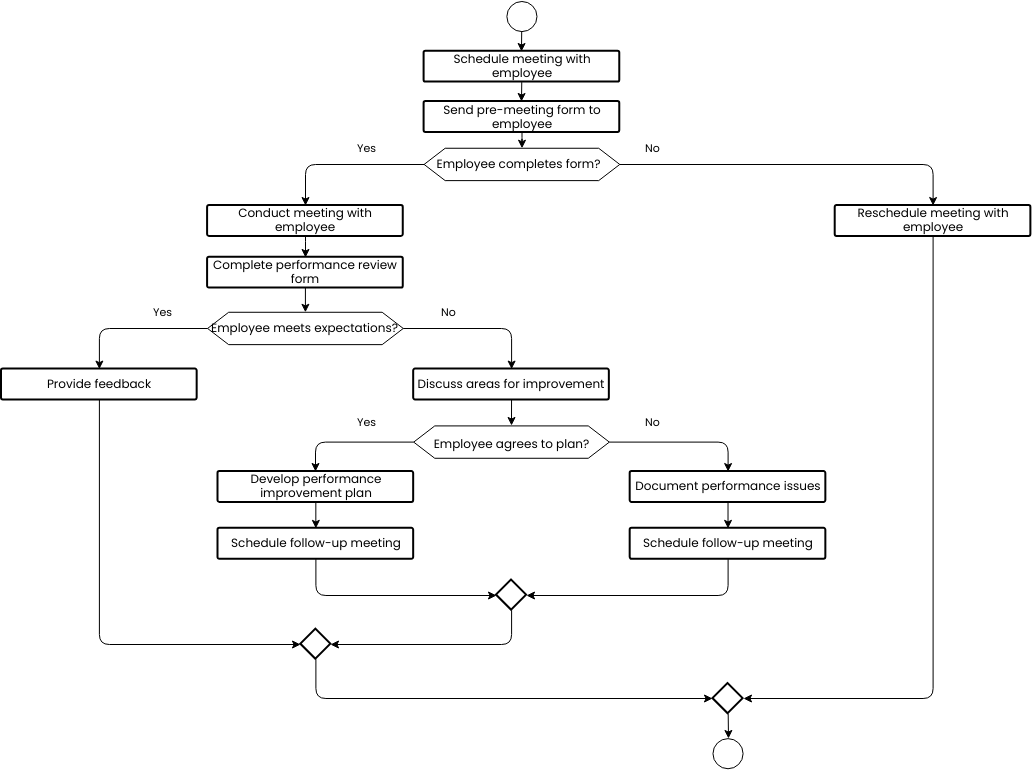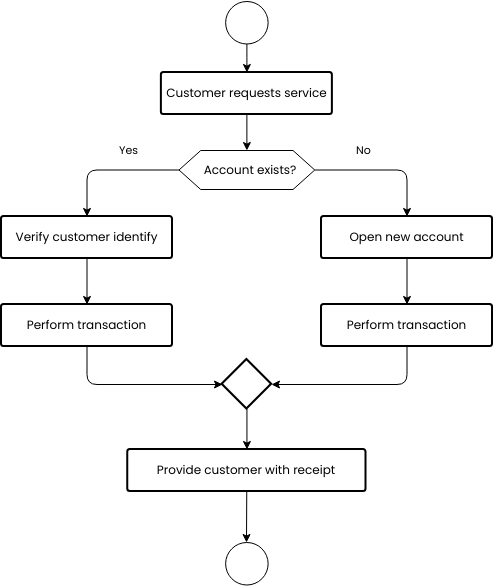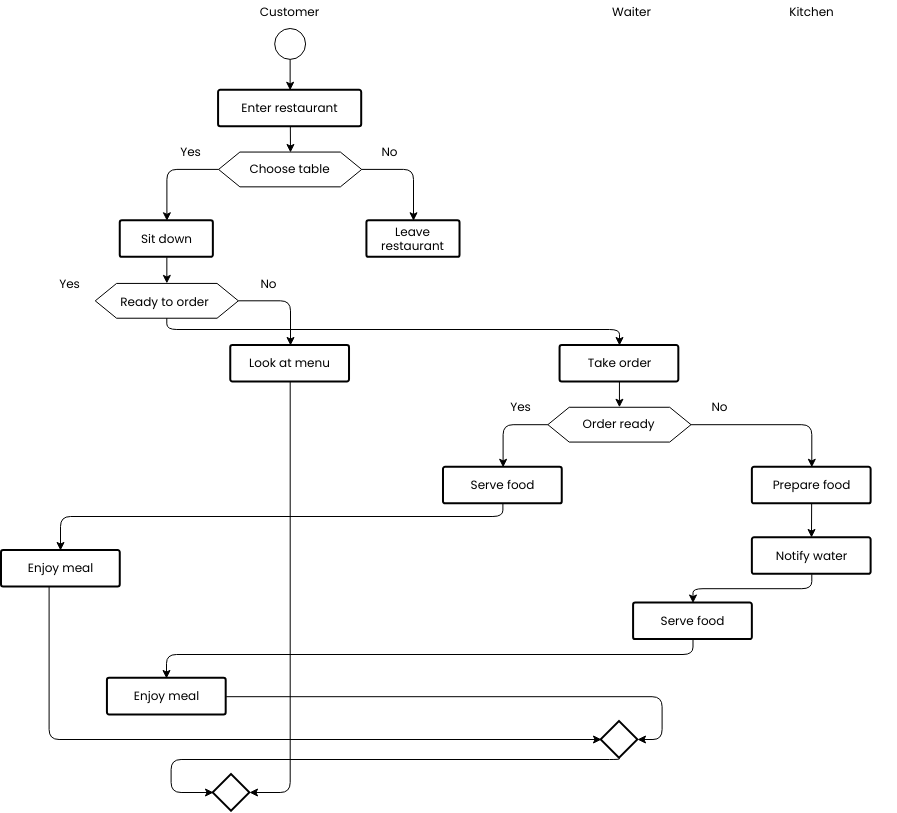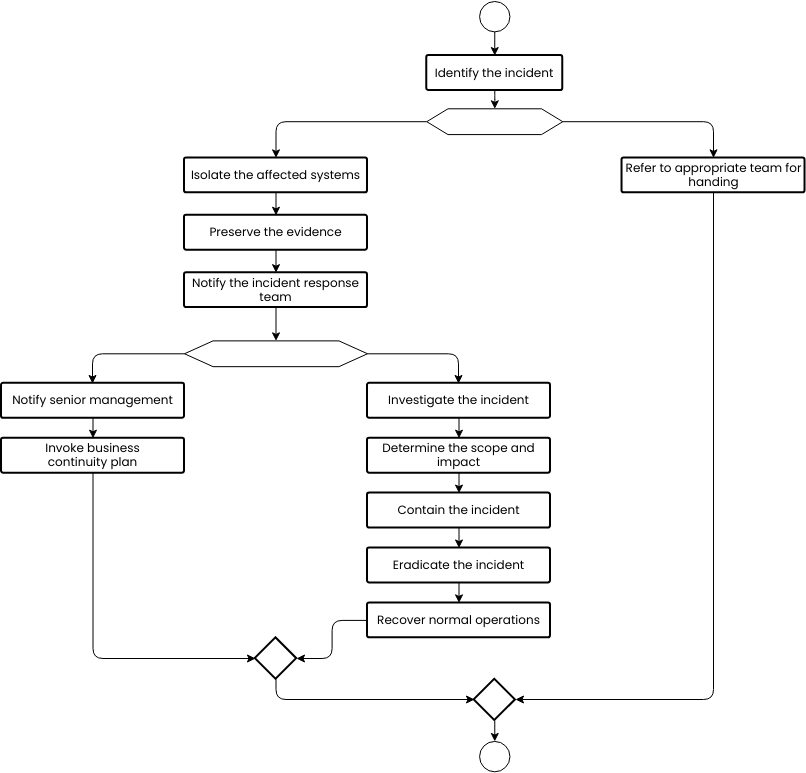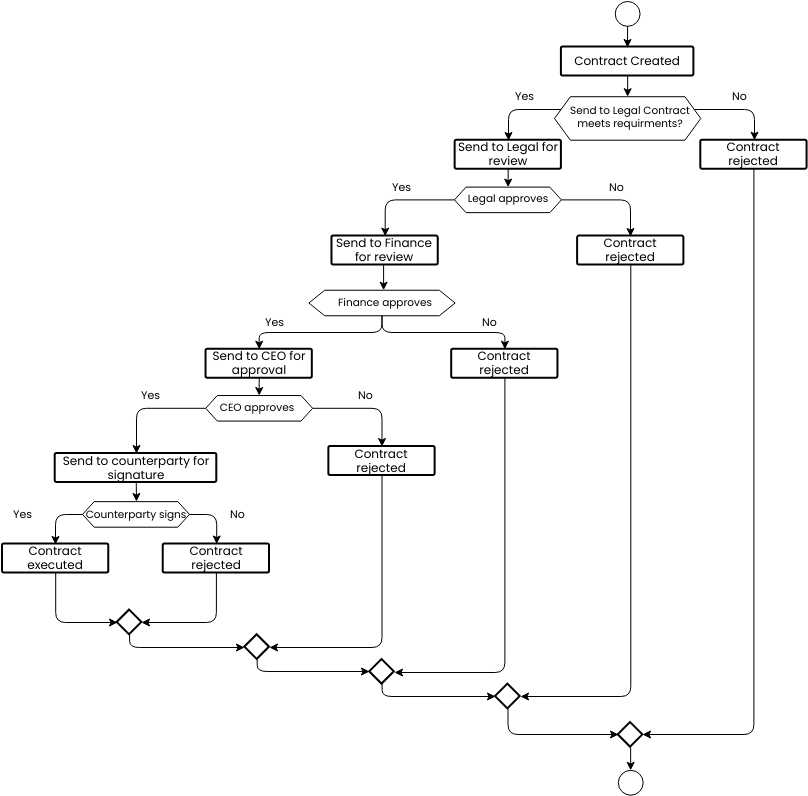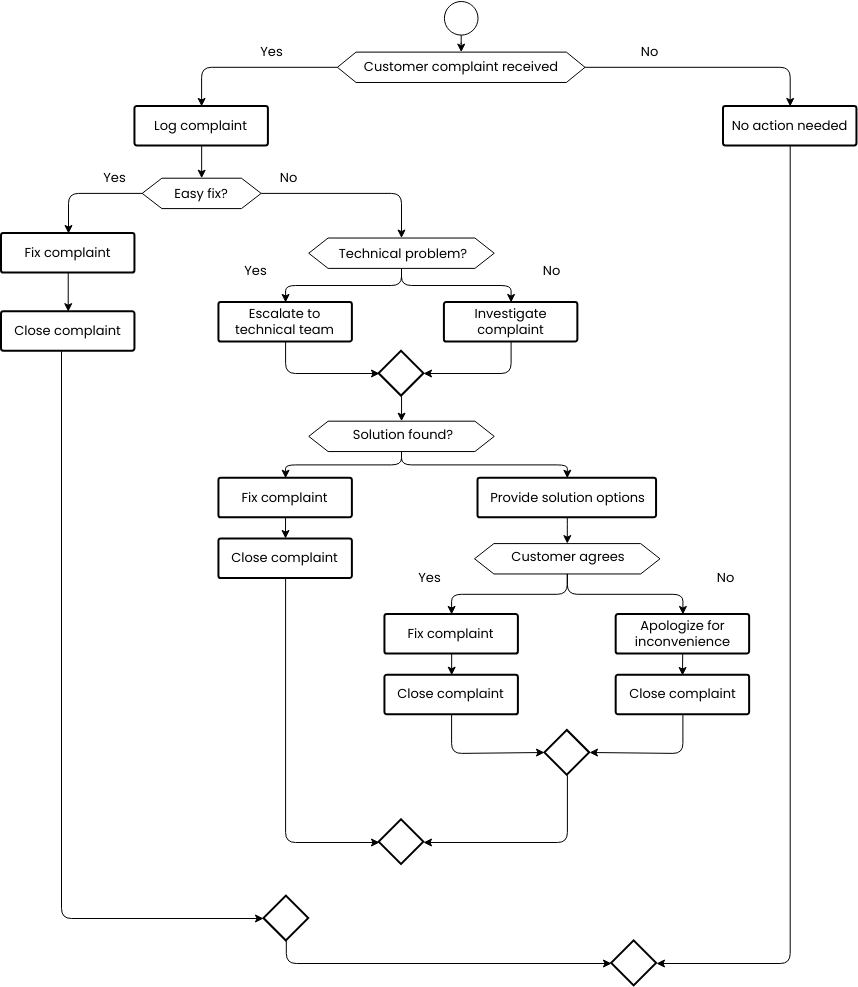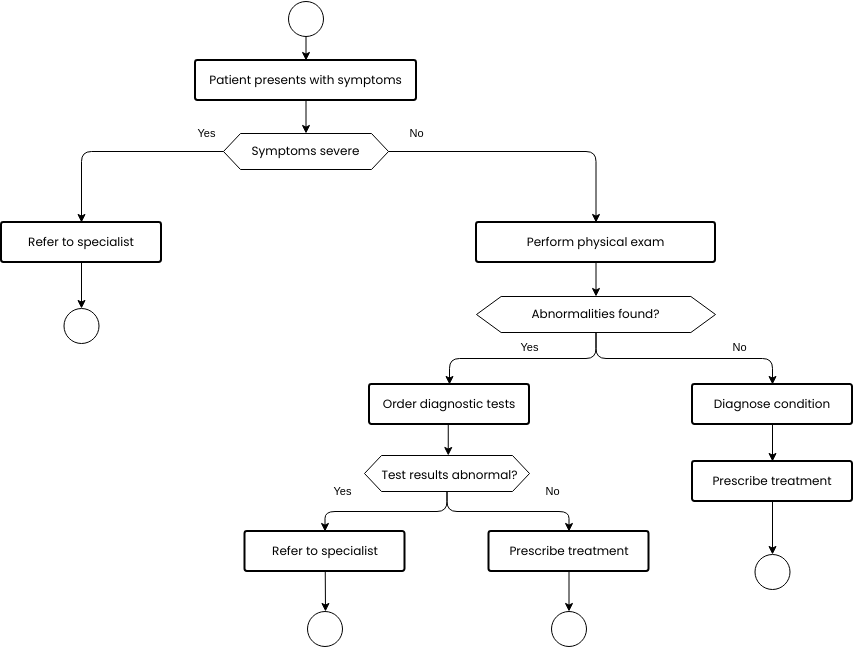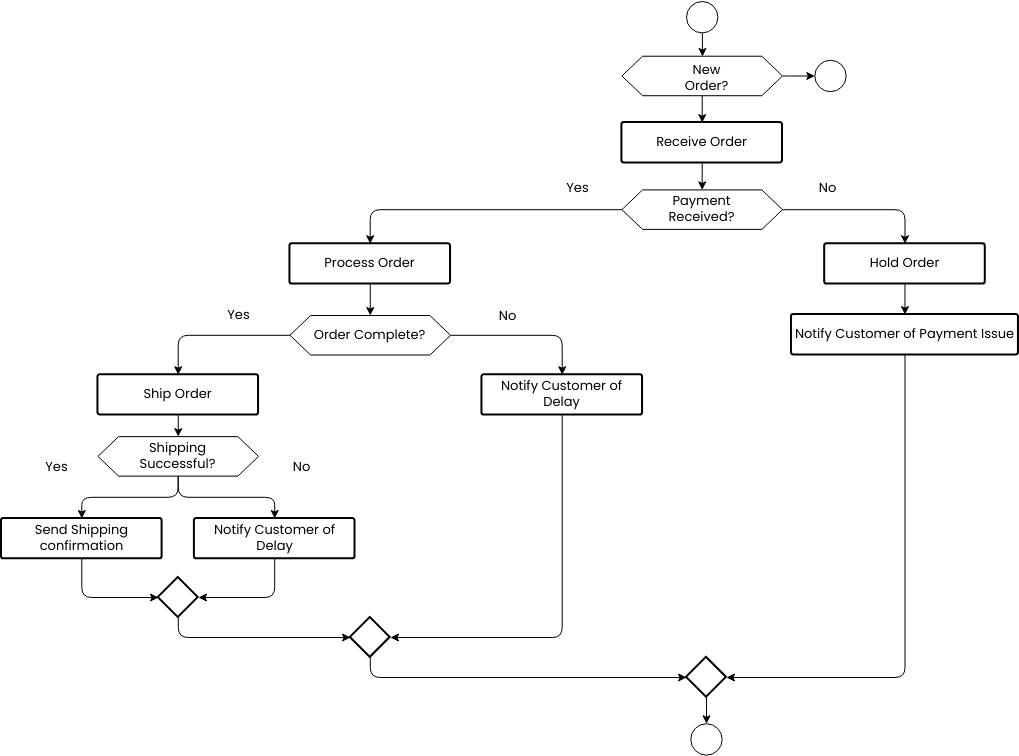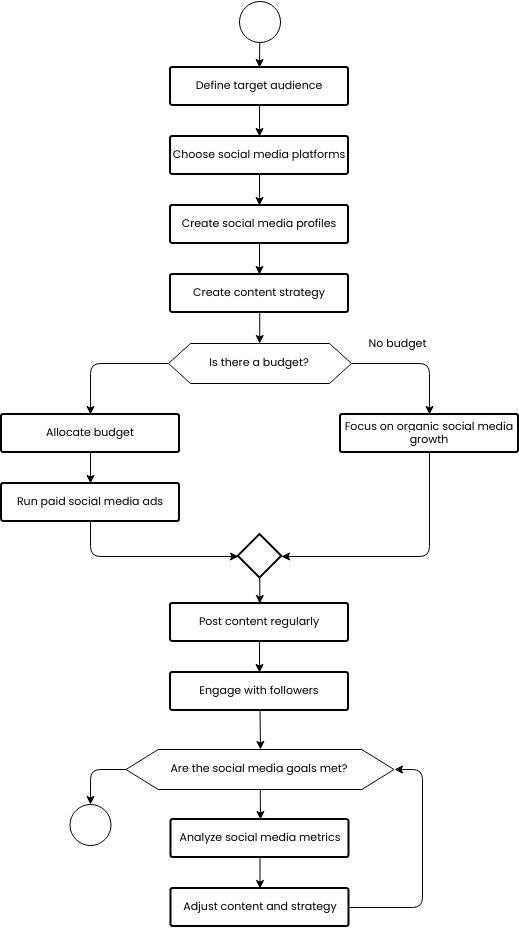The Emergency Response Flowchart outlines the steps that should be taken when an emergency occurs. The first step is to recognize that an emergency has occurred and to assess the situation to determine the nature and scope of the emergency.
Once the situation has been assessed, the next step is to activate the emergency response team. This team may include trained employees or outside emergency responders, depending on the nature of the emergency.
If the emergency is beyond the scope of the internal emergency response team, the next step is to request outside assistance. This may involve calling emergency services, such as police, fire, or medical personnel, to provide additional support and resources.
Throughout the emergency response process, it is important to provide assistance as necessary to those affected by the emergency. This may involve providing first aid, evacuating the area, or providing support and resources to those impacted by the emergency.
Overall, the Emergency Response Flowchart provides a clear and structured approach for responding to emergencies. By following these steps, businesses can help ensure the safety and well-being of their employees and customers, and minimize the impact of emergencies on their operations.
What are the benefits of creating Emergency Response Flowchart?
An Emergency Response Flowchart can be beneficial in several ways.
Firstly, it can ensure that all necessary steps in the emergency response process are identified and followed in a logical and efficient sequence, reducing the likelihood of errors or oversights.
Secondly, it can serve as a reference tool for employees involved in responding to an emergency, reducing the likelihood of confusion or miscommunication during a high-stress situation.
Thirdly, it can help identify bottlenecks or inefficiencies in the emergency response process, allowing businesses to make improvements and respond more quickly and effectively. Additionally, the flowchart can help ensure compliance with regulations and standards, and serve as a valuable communication tool for sharing the emergency response plan with stakeholders.
Overall, creating an Emergency Response Flowchart can help businesses respond quickly and effectively to emergencies, protecting the safety of employees and customers and minimizing damage to property and equipment.
Looking for flowchart design templates? Visit Visual Paradigm Online right away to look at some customizable templates that you prefer.
